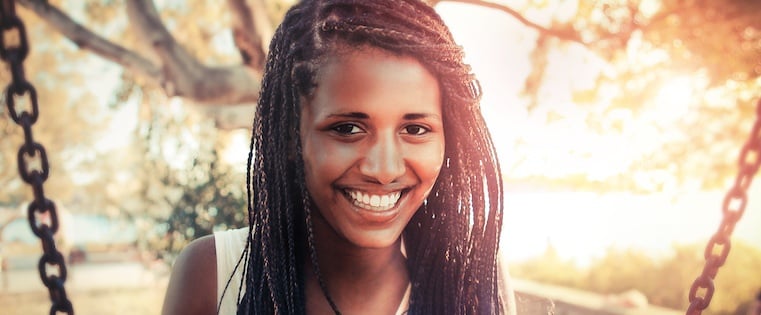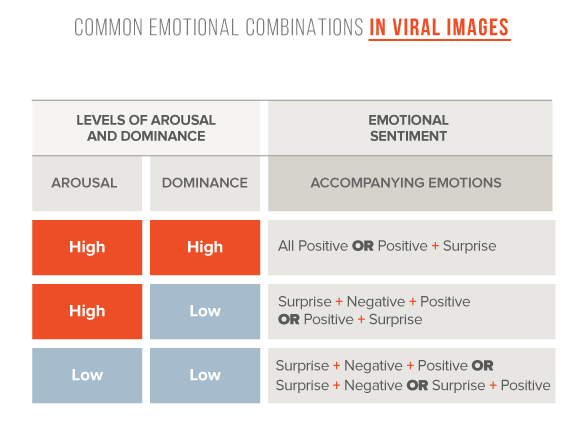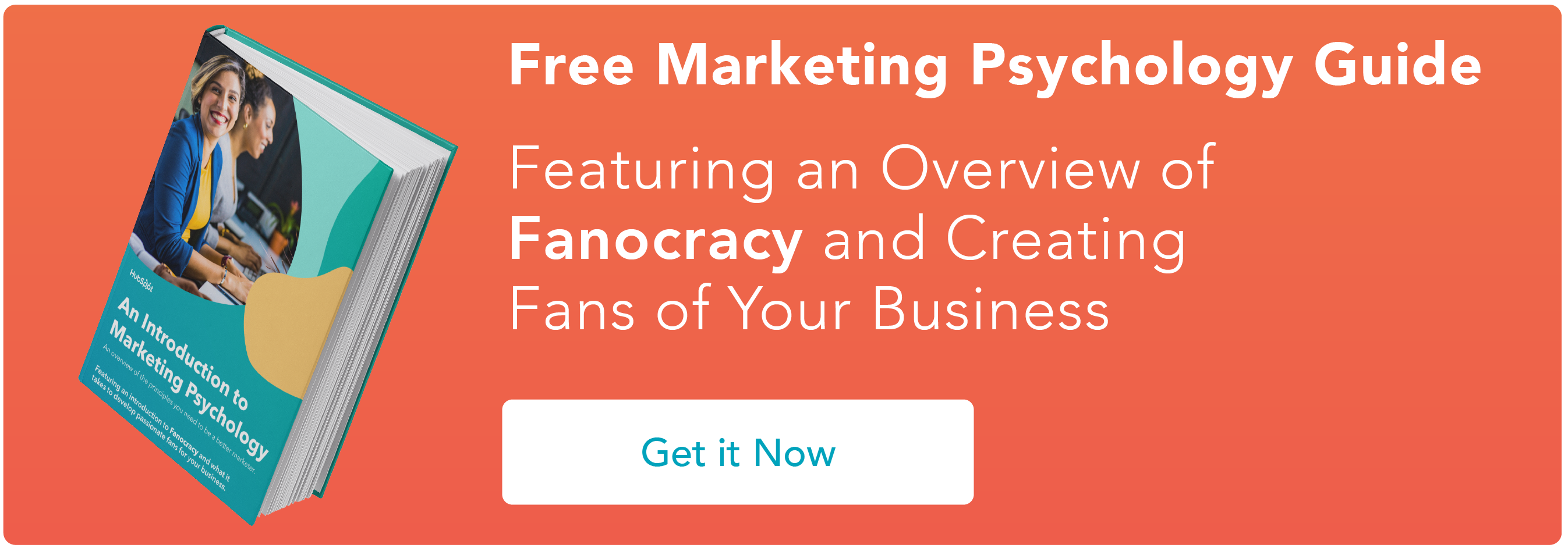
These days, we’re inundated with digital noise from the moment we wake up. Once we silence the alarm on our phone, we’ll spend the next few minutes on various apps and sites, dodging unwanted ads and unappealing headlines along the way.
However, you’ll find that some posts are simply unavoidable -- who could forget "The Dress" debate of 2015? It was truly viral content at its best, and the site that sold the dress reaped the benefits: Their organic traffic increased by 420%, and sales of the dress saw a whopping 560% increase.
How can something that seems so pointless influences our behavior?
New research indicates that an emotional connection paired with more nuanced combinations of additional dimensions like arousal and dominance have a significant impact on our sharing habits.
Intrigued? Let's dive into the research ...
Why Certain Emotional Combinations Make People Share
My team at Fractl recently used the Pleasure-Arousal-Dominance (PAD) model to analyze the emotional responses to 100 of the top images from Reddit’s r/pics community to determine the ideal emotional combinations for viral images.
We began by asking 400 respondents one simple question: How does this image make you feel?
The results revealed the top 10 emotions for viral images as shown below:

An obvious trend? The top viral emotions tend to be extremely positive, which echoes previous research. However, although negative emotions like hate, reproach, and resentment were reported far less than positive emotions, our data indicates that they can still generate a viral hit -- you just have to strike the right combinations of arousal and dominance.
Researchers Jacopo Staiano of Sorbonne University and Marco Guerini of Trento Rise studied the roles that valence, arousal, and dominance play in generating viral content -- three dimensions that help shape individual emotions.
Consider their individual contributions below:
- Valence is the positivity or negativity of an emotion. Happiness has a positive valence; fear has a negative valence.
- Arousal ranges from excitement to relaxation. Anger is a high-arousal emotion; sadness is low-arousal.
- Dominance ranges from submission to feeling in control. Fear is low-dominance; an emotion someone has more choice over, such as admiration, is high-dominance.
When we looked at how these levels varied among viral images, our analysis revealed that there are three ideal combinations of arousal and dominance that accompany highly viral emotions. Take a look at the list below:

What Does This Mean for Marketers?
Additional research indicates that emotional responses to content are actually more influential on purchasing decisions than the content itself, so brands need to make sure they hit the ideal levels of arousal and dominance and include the right emotional elements if the want to drive conversions.
For example, we know that the top viral emotions are incredibly positive (e.g., happiness and admiration). When paired with an element of surprise, the resulting high levels of both arousal and dominance can generate massive shares.
A great example is Dove’s highly successful “Real Beauty Sketches” campaign. The video features a forensic artist who draws a series of women from behind a curtain, completing the sketches based on each woman's verbal description of her own appearance. These were compared to drawings he also completed based on strangers' accounts of the same women.
In most cases, the sketches based on the strangers' perspectives resulted in more accurate and flattering portraits than those based on the women's own somewhat self-deprecating descriptions. The success of this highly emotional clip speaks for itself: To date, the video has more than 66 million views on YouTube.
As far as success with negative emotions, remember that everyone loves a happy ending, so success relies on pairing feelings like sadness with something more joyful like admiration.
In “Fireman Saves Kitten,” GoPro obtained footage of a firefighter who rescued an unconscious kitten while wearing GoPro's HD Hero3. GoPro reused the video and released it on its YouTube channel, and it’s earned more than 31 millions views since it went live.
Again, it’s a very emotionally-charged clip, but the combo of low-arousal and low-dominance emotions like fear and sadness is what helped this campaign succeed.
The good news? Your next viral hit doesn't require your marketing team to win a coin toss. Research continues to prove that virality isn’t a matter of chance -- it’s actually the result of a powerful emotional experience.
When outlining your next campaign, take a look back at the top 10 viral emotions and figure out the ideal combination of arousal and dominance that will help your content not just get read but shared.
What is your favorite example of viral content done right? Share your thoughts in the comments below.
from HubSpot Marketing Blog http://blog.hubspot.com/marketing/shareable-content-emotions
Via http://blog.hubspot.com/marketing/shareable-content-emotions

No comments:
Post a Comment